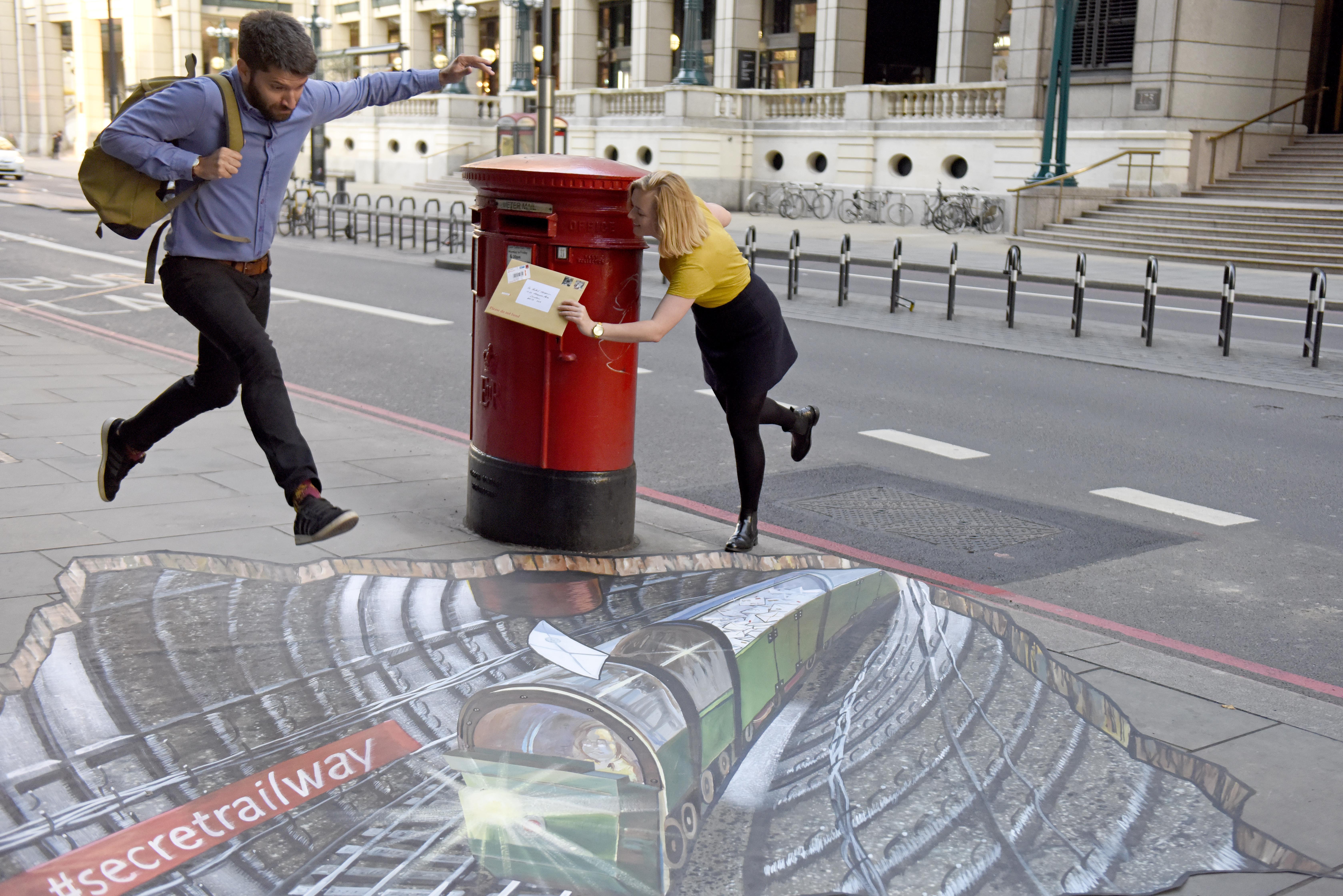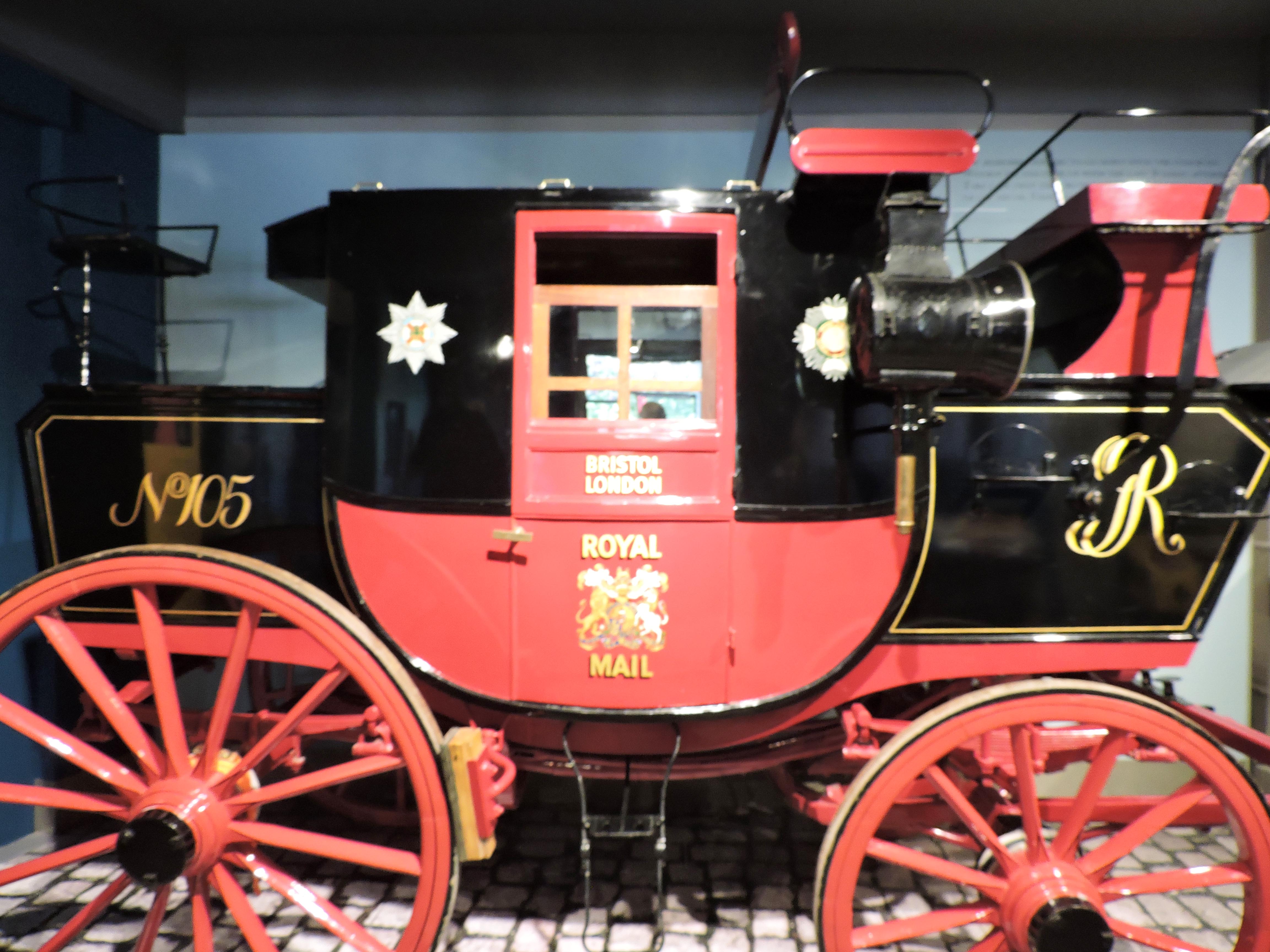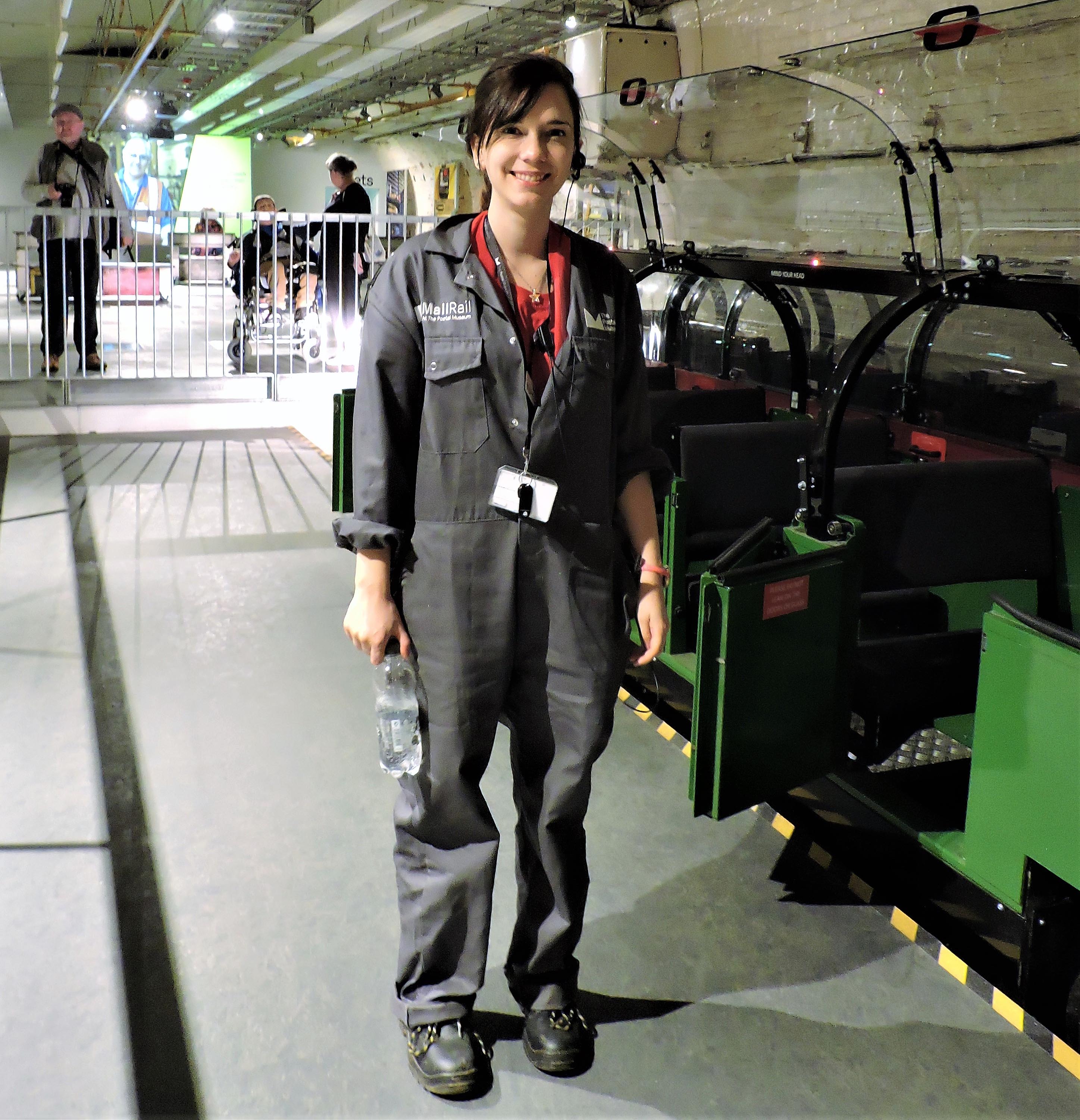LONDON — Everybody loves a secret. No surprise, then, that the unveiling last fall of a “secret railway” beneath London streets has proven a first-class hit with visitors to London’s new Postal Museum. From 1927-2003, four million letters and packages a day flew along this hidden railway.
Be warned: the hugely popular Mail Rail — “the beating heart of the British Postal System” — is often booked months in advance. But some tickets are released on a same-day basis — and we got lucky. Happily paying an extra £5 ($9.50 Cdn), we head across the street and down to the subterranean train depot at Phoenix Place in Clerkenwell.
“Mail Rail was like having your own giant train set to run,” says the comforting recorded voice of 27-year Rail Mail veteran, Ray Middlesworth, as we scrunch into our seats aboard refurbished trains. Soon we’re chugging along dark tunnels 21 metres beneath London thoroughfares — an engineering feat that reduced two-hour delivery times to 30 minutes.
Our toy-like train stops at riveting montages showing Royal Mail history — be it romantic, fanciful or practical. At each stop we see a map of London streets and virtually meet folks that relied on the mail. In the 1930s, a girl writes to her soldier sweetheart; a few decades later, a child in the early 1950s posts a letter to he adored “Princess Elizabeth;” in the Swinging Sixties, we spot Beatle George Harrison.


Above: Visitors to London's Postal Museum travel through history both above and below ground.
In fact, our 20 minute journey offers just a taste of the feast in the museum proper, where five centuries of Royal Mail history unfold. Wandering through this interactive tribute to Britain’s “first social network,” we try everything from learning Morse Code, to sorting letters aboard a “moving” mail train car; to capturing our own “royal” images on stamps. My stamp (ironically) arrives via email the next day, although I rather regret selecting the green tint, but my jewelled crown is undeniably splendid.
Colour, heroes and villains — all are present and on view. It makes sense that modern Royal Mail transport has theatrical roots. Henry VIII had first established the “post,” but it wasn’t until 1782 that theatre owner John Palmer imagined new possibilities for stagecoaches ferrying his actors between Bath and Bristol.
Palmer’s idea was an immediate hit, with one catch — only parliamentarians were guaranteed free delivery.
Regular folk paid to receive mail, so many refused, preferring to decode the messages hidden on envelopes before handing back their letters. All that changed in 1840 with the Penny Post stamp, bearing a very young Queen Victoria’s likeness. The “Penny Black” and guaranteed delivery resulted in skyrocketing literacy rates, forging a bond with the public that endures to this day. Sixty-eight million Penny Blacks were printed before being replaced by reds and blues in 1841 — today, the Museum’s rare sheet of Penny Blacks is priceless.
Love letters, Christmas cards and Valentines entered the rhythms of British life, as did the red pillar boxes that remain national icons — they stand for something reliable in British life. The first pillar boxes, designed by postal employee and prolific Victorian novelist Anthony Trollope, were in fact green, but red soon became the Royal Mail’s bright symbol. For years, we’re told, letter carriers also wore red-and-blue topcoats under black top hats, their bright uniforms making it easier to spot them, in one cynical official’s words, “idling in the pub.”
As mail delivery exploded, innovations quickly followed.
How best to carry the post? After stage coaches — one was famously attacked by a lioness escaped from a travelling menagerie — there came five-wheeled Victorian delivery bicycles, mail trains, buses, and boats.
A stylish 1941 green postal motorbike gleams on display and an 1980s Dodge Spacevan post bus is another attention-grabber.


Above: An ancient postal coach and a modern-day worker share the same space at the museum.
Perhaps the most striking storyline follows the emergence of postmen (and from 1870 onward, women) as heroic figures. During World War I, letters and packages from home nourished both spirits and appetites of those serving at the front, and letter carriers were often honoured soldiers.
In World War II, Britain again kept the mails moving. When the need for help was advertised, thousands of women signed up as postal volunteers and workers. As English cities suffered under bombs, postal workers kept calm and carried on.
One thrilling story centres on coastal Devon’s post, run almost without interruption despite near-constant bombardment. When Miss W.N. Scanlan of Dover’s post office was honoured for her bravery, she insisted on sharing it with her female colleagues, announcing, “Girls, we’ve got the British Empire Medal!”
There were rogues too, or, as Londoners still like to say, villains.
The most notorious, perhaps, were Ronnie Biggs and his gang, who boarded a Royal Mail train in 1963, seizing “HVP” (High Value Packets) containing cash worth £40 million ($70 million Cdn) in today’s money. Escaping from prison in 1965, Biggs flaunted his glamorous Brazilian lifestyle for years before illness forced him back home. “The Great Train Robbery” entered the public imagination, for good or for ill.
Design and stamp buffs will be intrigued by Tony Benn’s 1964 attempt — vetoed by Her Majesty — to remove the royal profile in favour of a portrait of public heroes like Winston Churchill. The compromise was larger stamps showing famous faces and topical subjects; the Queen’s profile remains in the right top corner. This is, after all, the Royal Mail.
A lot of postal history like Night Mail, the brilliant 1930s documentary touting the mail’s importance (with words by poet W.H. Auden and music by Benjamin Britten), or the beloved children’s TV show, Postman Pat, were news to us. This intriguing addition to London’s museum scene guarantees thrills for kids and adults alike — from riding the Mail Rail, to playing in a miniature post office to drinking in the history of this most solid and enduring of British institutions.
INFORMATION
• The Postal Museum is located at Calthorpe House, 15-20 Phoenix Place, London, WC1X 0DA
• For hours and ticket prices: http:// www.postalmuseum.org
• Ground floor treats include an old-fashioned British café and tea room, plus a gift shop bursting with mail-related items. The bestsellers, we learn, are the ionic red salt-and-pepper shakers, one shaped like a pillar box, the other like a telephone booth — both were sold out the day we visited.
• Air Canada, British Airways and WestJet offer daily flights to London from most major Canadian cities.